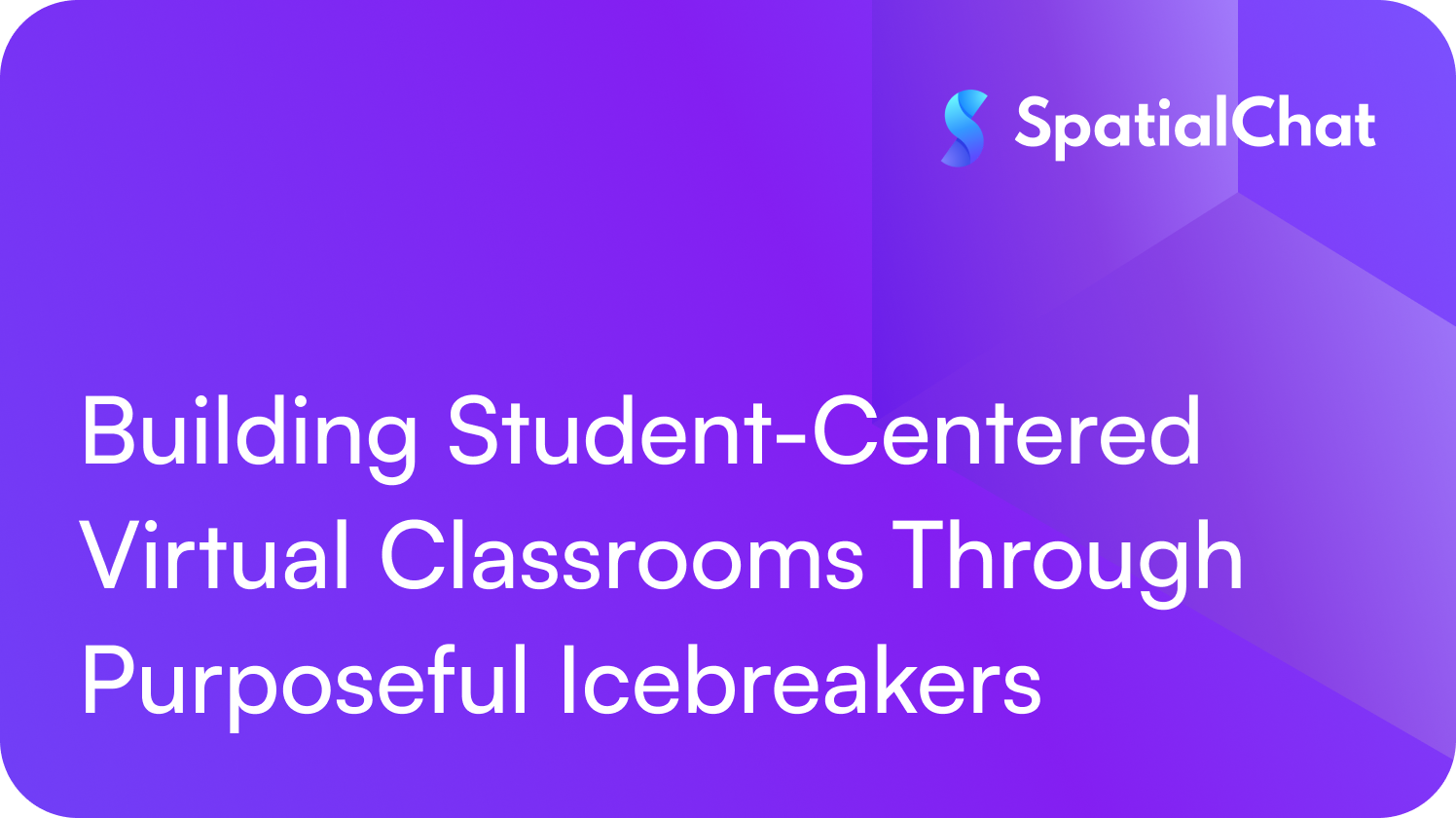Icebreakers can be polarizing. From “Two Truths and a Lie” to listing random nouns about oneself—or even maintaining eye contact in silence for an entire minute—these activities often feel like a lot to handle, especially when educators are juggling lesson plans, rosters, and the mystery of missing HDMI cables at the start of the school year.
While some may not enjoy participating in these exercises during staff meetings, many still lead them for students with enthusiasm—complete with marshmallows, balloons, and spaghetti towers. But when the sudden shift to virtual teaching arrived in 2020, these well-worn routines were often replaced with a simple, “Just drop it in the chat.”
It seemed like a reasonable substitute. But as veteran virtual educators know, it simply isn’t enough.
The transition to online teaching brought challenges that weren’t immediately visible. In a physical classroom, experienced educators pick up subtle cues during those first crucial moments—who’s confident, who hesitates before speaking, who’s already forming connections with peers, and who might need extra encouragement to feel a sense of belonging. These observations guide instructional decisions and inform how to engage each student meaningfully within their own zone of proximal development.
In virtual spaces, those cues disappear behind blank screens and muted microphones. Without that insight, it becomes difficult for educators to fully support students. The absence of visible student interactions leaves teachers without the context they need to tailor instruction and classroom dynamics effectively.
This lack of connection also makes it challenging to adopt the approach described by Zaretta Hammond, the author of Culturally Responsive Teaching and the Brain: Promoting Authentic Engagement and Rigor Among Culturally and Linguistically Diverse Students (Corwin, 2014), as “warm demanders”—educators who balance high expectations with empathy and trust. Without those essential moments of relationship-building, some instructors may default to overly rigid demands or, alternatively, lower expectations altogether. Both responses can ultimately undermine genuine student engagement.
So what can virtual instructors do to reclaim that essential connection? One powerful starting point is to fully embrace the chat. For many students—especially those who are hesitant to speak up or need more time to formulate their thoughts—the chat serves as an equalizer. It provides a backchannel where meaningful contributions can surface in real time, often from voices that might otherwise go unheard. Karen Costa, a faculty development facilitator and researcher, emphasizes the importance of this tool: “Inviting learners into the chat from the moment they enter the room communicates that everyone is important and that everyone brings expertise into the classroom” (2022). Used with intention, the chat can lay the foundation for inclusion and engagement from the very first moment.
Still, relying solely on teacher-directed prompts in the chat can create a bottleneck. In many virtual platforms, live classroom moments default to being teacher-centered, with educators positioned—both by design and by habit—as the primary drivers of interaction. This limits opportunities for students to co-create the classroom experience.
SpatialChat offers an alternative. With custom backgrounds and spatial audio, educators can build virtual environments that mirror the dynamics of in-person collaboration. Activities like philosophical chairs or four corners become possible again, allowing students to move, choose, and converse organically. Icebreakers in this context aren’t superficial—they’re instructional. They lay the groundwork for cultural competence, community-building, and metacognitive growth. As Zaretta Hammond notes, developing “community habits for growth in learning” begins with the kinds of tasks students are asked to engage in from day one.
Rather than treating icebreakers as optional niceties, educators can view them as critical tools for scaffolding learning. When designed with purpose, these early interactions help students build confidence by building competence. They introduce strategies students will carry into more complex academic work and foster an environment where learners are empowered to take on cognitive responsibility. And because student-driven activities shift the spotlight away from the instructor, teachers are free to observe. In those moments of observation lies the key to understanding each learner’s readiness, strengths, and needs—restoring the vital insights lost behind blank screens and muted mics. Ultimately, this reimagined approach to icebreakers allows educators to reclaim their role not only as facilitators of content but as stewards of community and growth in the virtual classroom.
See how SpatialChat helps educators foster connection, collaboration, and cognitive growth from day one. Book a demo today and experience the difference a dynamic, student-centered platform can make.
